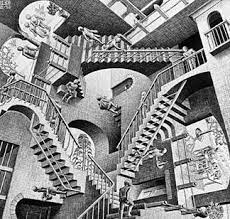cross-posted from: https://lemmit.online/post/2823044
This is an automated archive made by the Lemmit Bot.
The original was posted on /r/nostalgia by /u/Character-Emotion237 on 2024-05-02 22:39:26.

Yep. It feels weird to be nostalgic for windows 7, but it was honestly not bad. I think the reason why the loss of aero glass feels cold and sterile is because it honestly is. The whole metro/material design thing is just garbage. I don’t want buttons that look like abstract squares, I want buttons that look like buttons. What brain-dead designer honestly likes minimal design over skeumorphism?

I’m no designer (although I might be brain-dead), but I prefer minimalist UI over skeumorphism.

Eh, I was being hyperbolic when I probably shouldn’t have been. It just feels very lifeless to me. I understand the arguments for it, it just feels soulless and lifeless.

You want your computer to have soul?

But also win 7 had little to do with skeumorphism

Perhaps could be considered “frosted glass?”

Frutiger Aero is commonly used to describe it

From what I’ve read, Frutiger Aero is considered to be a form of skeumorphism, or at least skeumorphic-adjacent.

Damn I missed NT 4’s clean style back then…

I like them in different places. I minimalism in car screens because the focus should be the physical interior. But skeumorphism is way better for usability on a PC.

They were trying to unify their desktop and tablet UIs (touch-driven) which itself was fucking stupid since people interact with them totally differently.

I remember having a Wacom usb tablet at the time, and Windows kept slapping a virtual keyboard in the middle of my screen. It was infuriating, to say the least.

Especially at the time, and even somewhat still today, it saves bandwidth on virtual connections. Some places run thousands of virtual desktops for their users.
I liked Aero better, too

Counter-point, you could do that with skeumorphism via procedural generation by sending the base algorithms instead of icons and then rendering the icons client-side. It’s already done to a limited extent when it comes to games. Substance Designer and Painter are industry standards when it comes to creating textures and materials, and they can generate textures with resolutions anywhere from 128x128 to 8192x8192 without requiring any additional effort due to their procedural workflow. Granted, the textures are usually “baked” before actually being imported into the game engine, which is why you can’t tell a game to generate 8k textures (the game only has the rasterized textures, not the original procedural ones); however, the technology is already kinda there. That said, it can be hardware intensive, but it could be done.

Counter-point, you could do that with skeumorphism via procedural generation by sending the base algorithms instead of icons and then rendering the icons client-side
This is actually pretty close to what macOS does.

I agree, I never really liked Metro and the minimalism of Material design doesn’t vibe with me either. It’s mostly a personal taste thing though, I know several others who do like minimalism.
About it being weird to be nostalgic for Windows 7, it’s not to me, but I think it has to do with how it was the last OS I used that didn’t involve either several awful bugs to the point of unusability (Windows 10) or requiring extensive knowledge of how the system works (Linux) to daily-drive it; so I guess I look at it fondly as the last time I was “computer-innocent”, so to say.

The aero interface was a really good addition, in the early days of it, it sucked because it required alpha blending which wasn’t very optimized in graphics cards of the era. So even if it was supported, it ran like shit and ate performance.
I liked Vista. I can still point to examples of stuff in Windows 7 which were broken that worked perfectly fine in Vista. AFAIK, that stuff was never fixed because it was a niche item that most people didn’t bother with.
I’ve been up, down, inside and out of all of these OSes throughout my time in IT, and I can see all the problems. The sidebar/widgets in Vista were a mistake, poorly implemented fluff that consumed too many resources for what they could realistically do. If they were a lot lighter in terms of performance demands, then they would have been fine. Beyond that 7 was basically a reskinned Windows Vista, with some “updates”. You could get the same updates for Vista by the time 7 came out, and it made Vista quite reasonable.
IMO, the biggest problem Vista faced wasn’t that it was bloated or slow or buggy (though it was very buggy at the beginning - again, mostly fixed with patches by the time 7 landed), it was that Vista was built for the best computers at the time, with the idea that everything would improve to the point where the best computers “today” would become the minimum standard tomorrow. They were right of course, but most people were buying the cheapest HP, Dell, Acer, etc computers they could find with Intel Celeron processors and basically no graphics hardware worth a damn… They came shipped with Vista and it sucked because you bought a shit PC. The industry was going through a bargain basement type of phase where there were a lot of “discount” CPUs coming out. Before Celeron, you bought an Intel Pentium something or other, and they were all the same. You couldn’t get a premium Pentium processor, or a discount Pentium processor… Celeron was the first foray into what would become Intel atom, or at most the core i3. Intel was looking to expand into the budget households at a time when Microsoft put out their most demanding version of Windows. So people snapped up these Celeron shit boxes pre-installed with Vista and to nobody’s surprise, it sucked.
So Microsoft cobbled together a new, somewhat less demanding UI, threw away the widgets, and released the same thing as Windows 7. By the time it hit shelves, most people had figured out (specifically OEMs) that the Celeron wasn’t just a cheaper Intel CPU, it was handicapped. So the focus was turned to the core series of CPUs, and away from the hobbled Celeron line.
Look, Celeron had a place, just like Intel Atom. In consumer desktops, is not that place. Something like a point of sale, yeah, that’s fine. A glorified web browser or kiosk, sure. All good. A multitasking desktop? Not so much. But OEMs put that shit in everything, and they stopped doing that pretty quickly.
I very successfully ran a core 2 duo system on Vista for a long time in my younger years. 4G of RAM, Nvidia GPU… It worked really well, and I used it for many years. It was even a laptop. I still have it, it still works, but I have more powerful systems, so it’s sitting in a protective case and has been untouched for many years at this point. That system was my daily driver for pretty much the entirety of college. I also had a core 2 duo at home, but I spent most of my days on campus with my laptop.
It was excellent.
Yet, everyone praises Windows 7, despite it having features that were non-functional for its entire lifespan, which people either didn’t notice, or didn’t care that those things didn’t work. I don’t hate 7. I still think that it’s UI and everything was superior over 8/8.1, and that it was a really good OS for average use. As an administrator and a power user, I’m happy on 10. I also used 8/8.1 for a while and though it was functional, it was pretty painful overall. Especially compared to 10.
Don’t get me started on W11.

I agree and think the main issue with Vista, as you alluded to, was that Microsoft set the minimum specs far too low and gave companies an excuse to add the absolute minimum bargain basement components, then blame Vista for being slow.
However, if they’d increased the minimum requirements those same companies would have a fit and refuse to ship Vista at all.

Microsoft has always had ridiculously low system requirements. Even if they seemed high at the time, they were rapidly outpaced by the technology.
After XP, if someone fell below the minimum spec, it was more of a question of, “why do you still own something so shit?” Rather than, “why are the requirements so high?”
Even with W11, which I’ll only lightly touch on, the only concerning requirement is the TPM. Until Microsoft required that you have one to run 11, nobody really knew WTF a TPM is, outside of IT security circles. Most still don’t know, and only understand it’s a requirement for Windows 11.
It’s fine, for most people the role of a TPM is entirely technical mumbo jumbo. What hurts is that a lot of motherboard OEMs put little to no thought into even allowing an option for a TPM; so anyone who built their own machine essentially got screwed by the requirement.
Beyond the TPM, 11 requires a 64 bit processor, 1Ghz+, 4G of RAM, 64G disk, UEFI, a GPU with support for DX12, 720p display with at least 8 bits per color of depth, and internet.
Given that I’m not even sure they make single core or less than 1Ghz processors anymore, and who tf doesn’t have a 64 bit compatible CPU (that was added to Intel CPUs at the core 2 series… No, not core i* 2nd gen, the core 2, two generations prior), if you have less than 8G of RAM for anything now, WTF can you even use your computer for? 64G of storage is a joke. I don’t even think they still manufacture SSDs smaller than 64G now. HDDs are easily 500G+ pretty much exclusively. UEFI replaced BIOS booting a while ago. Like 5-10 years ago. It was at least an option for booting on systems for nearly a decade or more. DX12 is kinda new, if you consider 2015 (DX12’s launch date) “new”. 720p is tiny, are you using a netbook? I don’t even think you can find anything smaller than 720p as a full monitor anymore to buy, and 8 bits per channel of color is 24bit, which has been the standard to strive for since XP.
The only pinch was the TPM. Most people didn’t have one, many couldn’t even get one, and those that could, couldn’t find them. Most custom builds didn’t have one included and the main board OEM didn’t make one available, even if they had a port for you to put one in. People using prebuilt systems were mixed, some laptops (and some desktops too, I suppose) shipped with one whether you asked for it or not, notably business systems were often in this category, and if they didn’t, you were SOL. Buy a new computer.
For CPUs, anything before the Intel core i series 8th gen was generally “unsupported” according to Microsofts supported CPU list for W11. 8th gen came out in what? 2017? Making them 4 years old by the time W11 landed, at which point you’ll probably want to upgrade to something newer before upgrading to W11, since an unsupported CPU would be at least 5+ years old at that point.
The required specs are so far below what I would have recommended for a build when W11 launched. Most people only failed on the TPM. A product which they had never heard about before, didn’t know what it did, and didn’t know why they would even want one at all, at the time.
I’m not saying older hardware isn’t useful, but most people upgrade more than once every 5 years. Enthusiasts like myself are the ones running systems from 2010, and they’re happy about it. The TPM was, and is, the issue.

I get what you mean. I used Vista from sometime around 2011-2013, and even though it was slow, I always thought it was really beautiful and still have fond memories of it.

Aero was peak. If I could get Windows 7 with dark mode then I’d bust

You can probably create a rice for kde that looks like windows 7 and with built in dark mode :)

W7 was the last version where I felt like a normal user could have full control. I could do updates once a week without having to worry about setting safe hours. Settings weren’t duplicated and scattered across multiple locations and UI styles. As far as I remember there were very few un-uninstallable features, it was the OS and what ever the user wanted. No McAffee demo, Candy Crush, OneDrive, XBox, Spotify, etc.

I love 7. It’s the last good version of Windows. I didn’t use Linux as much during the Win 7 years. Search still sucked though.

what if i told you you can have this on linux?

Looks like it hasn’t been updated in 4 years. While KDE supports theming, I wish they focused on it more
Edit: Looks like the Github for it was updated last year. Maybe it’s worth seeing the KDE 6 compatibility

I did love Aero. And Aero Snap was legit useful and remains so. macOS for whatever reason has had trouble implementing what I would now consider an essential feature: at least a basic ability to drag to the side of your screen for some basic tiling (yes… I know later versions have a “tiling” feature, but it is as if they looked at Aero Snap and said “wow, so complicated” and purposefully made it dumb).
Also, just use Linux.

I use Rectangle on my work Mac.

Saved this comment for when I started work today. Thank you. This is so much better. I was shocked when I got a Mac for work and window snapping was not a thing.

Right!

Man, Windows 7 was great. All the excellent parts of Vista (and contrary to popular belief, the were many excellent things about that OS), and none of the nasty. Although that can be somewhat attributed to computing power having caught up by the time 7 was released.
I remember switching from Vista to 7 fulltime as soon as the beta came out. Even then, it was faster and more stable than Vista on the same hardware.
Coincidentally, Windows 7 was around for a whole lot of good times in my life…

Windows 7 from a usability standpoint was such cancer. But I do 100% miss the aesthetic of the time :(
Also rip the old internet / search engines

I love windows 11, windows 7 aero felt cheap and plasticey. I much prefer the minimalist look of 11

I actually wish it were colder and more sterile than it is, like it was before XP.

I’m with you there. Maybe all the gray was off putting to people, but I liked that the ui elements were more visually distinct from the content without being overly elaborate and distracting.
These days, my daily driver is a gnome desktop on Linux, and it gets the balance right without looking dated, imo.

My personal daily driver laptop is also running gnome, I much prefer Wayland gnome then much of anything else. My work and personal desktop are Win 11 for AutoCAD and gaming reasons.

I think Windows 7 and 11 both look good. Windows 10 doesn’t look as good by comparison.

For me it’s the reverse. Windows 2000, for me, was the best looking windows to date. Windows vista, XP, and indeed aero felt child like, non-serious, unprofessional.

This so hard, we still have XP machines running scada software and seeing the bubbly-blue IU makes it look like a 90’s educational game.

Hehehe, “90’s educational game”. I really laughed from that one. So on point.

It was my last Windows too. I used it until shortly before the end of Extended Support, stubbornly refusing to upgrade.
I had been running Dualboot with Ubuntu for a while, but something bricked my bootloader (I didn’t bother investigating just what nor trying to fix it) and I decided the time was as good as any to take the leap and go fully Linux.
I’d love to say I never looked back, but every now and then I’m tinkering to get something to run and think of the days when the question “will it work?” was reserved for complex mod setups in Skyrim. The compatibility tools have gotten a lot better and I’ve gotten more experienced and confident with them and the system itself, but there are days where I miss the comfort.
Still, the newer Windows versions never appealed enough to consider going getting, and they’re growing less and less appealing with each new update. I’m using Win10 at work and it has only cemented my conviction to not get it for myself.

I just got this set up in virtualbox and am planning on using jt for things. What things I will find out later.

People smack-talk Windows 8, but it brought a lot of under-the-hood improvements that are really nice to have. If it hadn’t been paired with the full-screen Start menu, I think it would have been remembered much more fondly.
Hardcore Windows people do not like UI change is the message I think Microsoft needs to learn, and I say this as someone who actually really liked the Metro design language in 8. If they’d made something more like Win10, I suspect it would have gone down a little easier.
Personally, I also liked 8 & 10’s Start menu. I hated the upteen-nested-folders-deep trainwreck that was the 95-to-7 era’s Start menu. I liked having tiles I could easily move & manage.

This was the last version of Windows that I used though I liked the skinny Vista style toolbar better.

